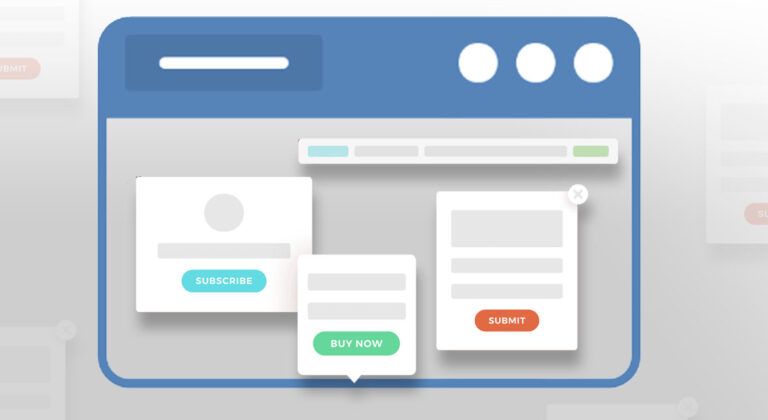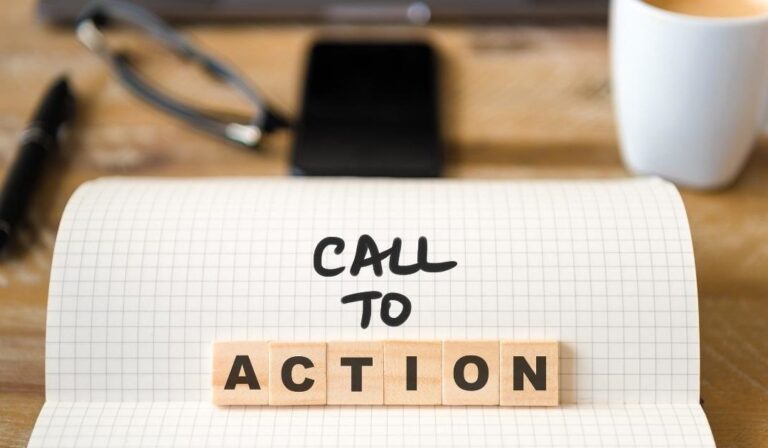Headline Writing: 15 Great Tips That Will Skyrocket Your Conversions

I hope you enjoy this blog post. If you want Hello Bar to grow your leads, click here.
Author:
Ryan Bettencourt
Published
July 9, 2024

Believe it or not, some of the best headline writing strategies come from the good old days of newspapers. They’re a fading breed, but we can still learn from those who went before us, right?
In the newspaper industry, writers and editors had to grab readers’ attention right off the bat with an enticing headline. Otherwise, nobody ever read the small copy below those headlines.
The same thing is happening on the Internet. We don’t know about you, but we see about 50 headlines before we’ve had our first cup of coffee in the morning. So how do you make yours stand out and skyrocket your conversions?
Let’s find out.
Best Practices to Write Great Headlines?
It’s a fact that the online world is overflowing with information. And since your headlines are the first impression your content makes, they should be catchy to convince your target audience to dive deeper.
Here are some key best practices to help with writing headlines:
- Provide Useful Information: Create headlines front-loaded with useful information, especially benefits to make the copy irresistible to the target audience.
Will the headline solve a problem, teach them something new, save them time or money, or a joke to make them laugh? A well-written headline should communicate how clicking will benefit the reader.
- Be Clear and Concise: Steer clear of confusing headlines and instead be clear and concise. Don’t make your target audience guess what your article is about.
Use easy words that quickly explain the main idea. Here’s an example, instead of “Boost Your Career Prospects,” say “Land Your Dream Job.”
- Use Power Words: Spice things up with power words like “ultimate,” “breathtaking,” “secret” and others to evoke emotion and excitement.
- Spark Curiosity: Use questions, surprising statements, or leave out key information to make readers curious and want to click. For example, “Want to Write Headlines That Get Clicked?” engages the reader and makes them think about the answer.
These techniques entice readers to explore your content and learn more.
- Include Keywords: Use keywords related to your topic to help search engines find your content. For example, if you’re writing about baking, include words like “baking tips” or “delicious cookies” in your headline.
What Are the Overall Headline Writing Rules?
The rules for creating great headlines are pretty simple:
- Remove any word that doesn’t contribute to value.
- Try to keep stop words (a, the, of, etc.) to a minimum.
- Keep headlines to 70 characters or less if possible.
- Don’t be boring.
- Focus on unique adjectives and verbs.
That’s it. Other than that, feel free to use your creativity — but don’t neglect the insight we’re about to share with you.
15 Pro Tips to Improve Your Headline Writing Performance
Do you know that the human attention span is decreasing, now down to just 8.25 seconds? This means your headlines need to be interesting, catchy, and compelling to grab attention quickly.
Here are 15 pro tips to help you write great headlines:
1. Follow the 4 U’s Rule When Writing Headlines

Alliteration is a useful concept because it makes information easier to retain. That’s why it’s helpful to remember the four U’s of headline writing: unique, urgent, ultra-specific, and useful.
Each of these qualities should be present in your headline if you want people to click and read.
Must Be Unique
We’ve been working in the digital marketing field for a long time, so we’ve seen millions of pieces of content marketing. That’s not an understatement.
Years ago, it wasn’t uncommon to see the same headlines appear over and over again:
- How to fix your sink
- When to take your dog to the vet
- Are garter snakes dangerous?
Those headlines get the point across, but they’re boring. So how can we liven them up?
- Clog, Schnog: Fix Your Sink in 10 Minutes or Less With Household Items
- Sick Pooch? 21 Times You Should Definitely Take Your Dog to the Vet
- Garter Snakes: Dangerous or Helpful? We Have the Answer
Must Be Ultra-Specific
Specifics are essential in the best headlines because readers want to know if they’ll be wasting their time. Plus, you convey authority and credibility when you can get specific about your topic.
Let’s rewrite the generic headlines from the last section:
- 101 Ways to Fix Your Sink Without a Plunger
- When to Take Your Dog to the Vet Because of Coughing
- How Dangerous Are Garter Snakes and How Can You Identify Them?
Each of these headlines adds an element of specificity to the topic, either by numbering the tips or adding extra information about the article.
Must Create a Sense of Urgency
Urgency can help improve click-through rates because people feel like time is running out. We can use our generic headlines to write better, more urgent versions:
- Clogged Sink? Check Out These Strategic Fixes Before the Flood
- Sick Dog? Don’t Wait to Take Him to the Vet. Here’s Why
- Snakes in the Yard? Learn How to Identify the Dangerous Species
Each of these hits a pain point. Nobody wants a flooded kitchen, a critically ill dog, or a potentially venomous snake in the yard.
Must Be Useful
You can look at the examples I’ve provided to see how I’ve integrated usefulness into each one. These headlines promise that we’ll help the reader solve a problem, make a decision, or keep their families safe.
If you don’t have anything useful to say, maybe you’re writing the wrong content.
2. State the Obvious: Write Simple and Easy-to-Understand Headlines

When people read your headline, think of it as planting a seed in their minds. Hopefully, it’ll grow into a full-fledged plant as your article or other piece of content unfolds, but for now, you’re just focusing on that seed.
Don’t try to be too clever or witty here. Instead, focus on functional, simple language that gets your point across and promises what’s to come.
For instance, the headline “Guide to different types of sunglasses” tells you exactly what the article covers. It’s easy to understand for anyone looking to learn about sunglasses.

Image via FeelGood Contacts
3. Use Powerful Words When Writing Headlines
Powerful words tend to be verbs. They’re strong and actionable, so people get excited about the content.
In this article, for instance, we used the word “skyrocket.” we could have used the word “increase,” but that’s not nearly as powerful.
The best headlines can also evoke certain emotions by using power words. They can turn good headlines into killer headlines. They grab attention and keep readers engaged, making your content irresistible.
For a small business owner, using power words in headlines can significantly boost online traffic and conversion rates.
What makes this Goodreads’s headline among the top headlines is it uses the power word “ultimate,” which promises the best guide. It also makes readers curious and excited to see the must-read books they shouldn’t miss.
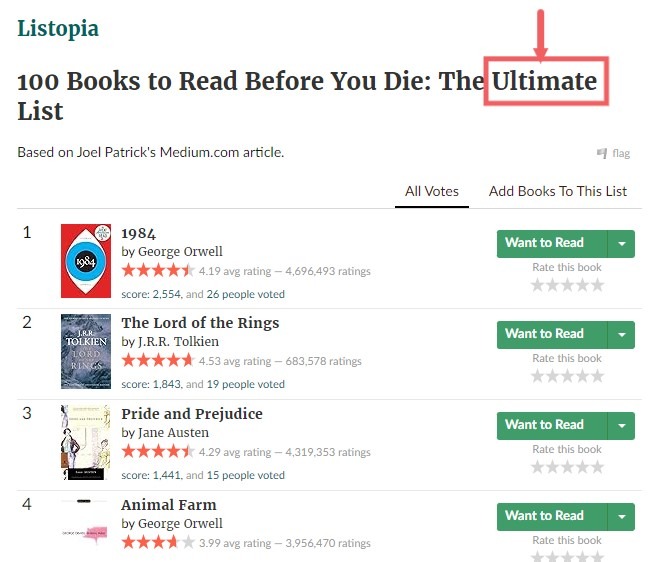
Image via Goodreads
4. Include Specific Numbers and Data in Your Headlines

You’ll also notice that this article’s headline specifies “15 Great Tips.” I didn’t have to use a number, but it was a strategic choice.
Numbers tell your reader exactly what they can expect from your article.
You can also use statistics, dollar figures, or percentage points in your headline if you’re writing a data-driven article. The numbers themselves can surprise your readers and encourage them to click.
5. Making a Strong Statement
The headline “18 History Lessons Your Teacher Lied to You About” is a great example of making a strong statement. It grabs attention by challenging what people think they know.
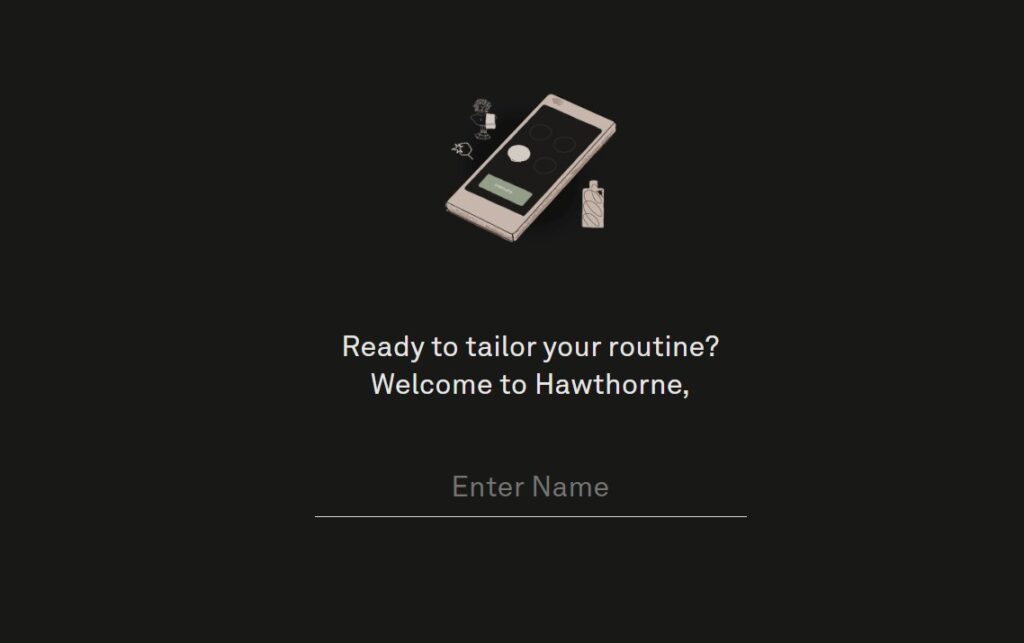
Image via Reader’s Digest
This headline makes people curious and even a bit skeptical by suggesting that some things they learned in history class aren’t true. Readers will want to click to find out which lessons they were misled about and to see if their beliefs are challenged.
Using bold and controversial statements can really draw readers in, but it’s important to know your audience. If your readers like exciting and surprising content, headlines like this can get lots of clicks and shares.
6. Use Your Targeted Keywords in Your Headlines
We rarely write an article without putting the focus keyword in our headline. Why? Because it’s the first thing Google sees.
If the headline doesn’t include our primary or targeted keyword, how will Google know where to rank our content in search results?
In this article, we’ve focused on the keyword “headline writing.” As you can see, it’s the first phrase in the headline. We also incorporated the keyword “conversions” because we knew we wanted to talk about how headlines can inspire conversions.
7. Make It Mysterious to Grab People’s Attention

Sometimes, headline writing boils down to asking a simple question:
- What’s the best way to clean my carpet?
- How do you handle a break-in at your apartment?
- What’s the best procedure for dealing with bed bugs?
These are all questions people type into Google’s search bar every day. If they’re related to your brand, you can answer them by creating a question in the headline and a response in the body copy
For instance, this title works well because it sparks curiosity by asking something many people might wonder about. We know we are!
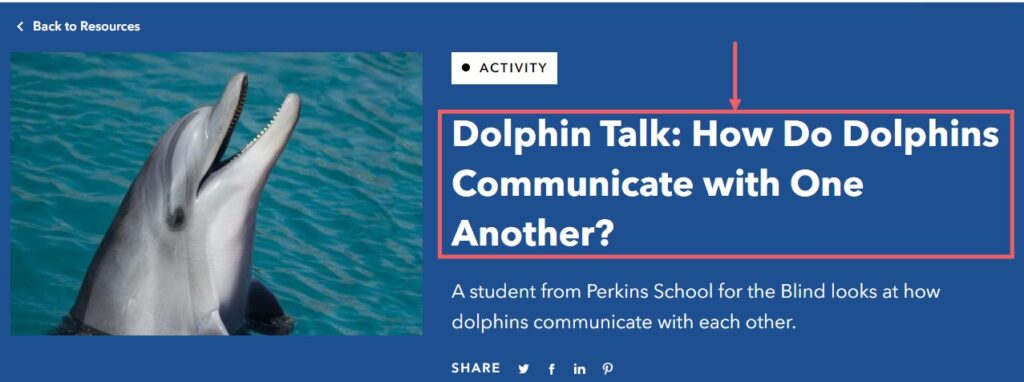
Image via Perkins School for the Blind
8. Think About What Matters to Your Readers and Use It in Your Headlines
Knowing what your audience likes and cares about is important for making headlines that grab their attention. You can use surveys and polls to help you understand what they like.
With this research, you’ll write headlines that speak directly to what they want.
As you keep talking to your audience and getting their thoughts, you’ll learn more about them. This helps you make the best headlines that they’ll find interesting and want to click on.
9. Address your readers using the 2nd person when headline writing
You’ll notice that I’m talking directly to you in this audience. You can also use the second person to write compelling headlines:
- What’s Your Interior Design Style? Click to Find Out
- Do You Know the Best Way to Train Your Dog?
- Can You Guess Which Popup Type Works the Best?
Each headline directly addresses the reader as “you,” just like this example.

Image via Nordic Visitor
10. Create a Sense of Controversy to Draw Readers’ Curiosity
The headline “Things Tourists Should Stop Doing Abroad” is a great example of using controversy to get attention. It hints that tourists are making mistakes, which makes people curious and want to read more.
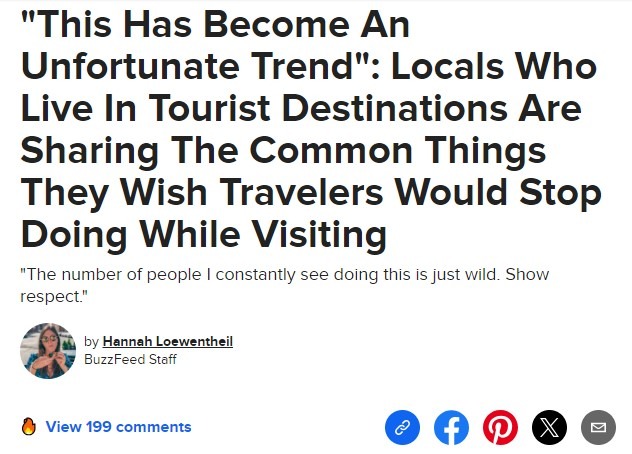
Image via BuzzFeed
This kind of headline writing gets people talking. Some might feel defensive, and others might totally agree. It’s the kind of headline that can make your content very popular.
This one attracted several hundred comments and lots of shares. Using strong opinions can boost your web traffic and keep readers engaged.
11. A/B Test Your Headlines to Check What Works Best
We built A/B testing into Hello Bar for a reason. We knew our customers would want to test different versions of top bars, modals, sliders, page takeovers, and other assets to see which ones worked best.
A/B testing works. In fact, it’s essential. Play with different types of headline writing to figure out what works.
12. Whenever Possible, Use Images to Complement Your Headline Writing

That’s a cute picture, right? It’s a mother and daughter putting money in a piggy bank.
I might be writing an article about savings for your kids’ college funds, teaching children the value of a dollar, or setting an allowance for kids.
Whatever the case, a good image helps complement your headline writing.
13. Give Readers a Strong Reason Why They Should Click Your Headline
You’ve seen those Upworthy-style headlines, right? It’s always something like, “A Man Shouts at His Toddler. You Won’t Believe What Happens Next!”
That’s an extreme version of this headline writing tip. The goal is to give your readers a strong impetus to click. This one tells a personal story about losing weight but surprises people by saying diets don’t actually help. It makes you wonder how they lost weight without dieting.
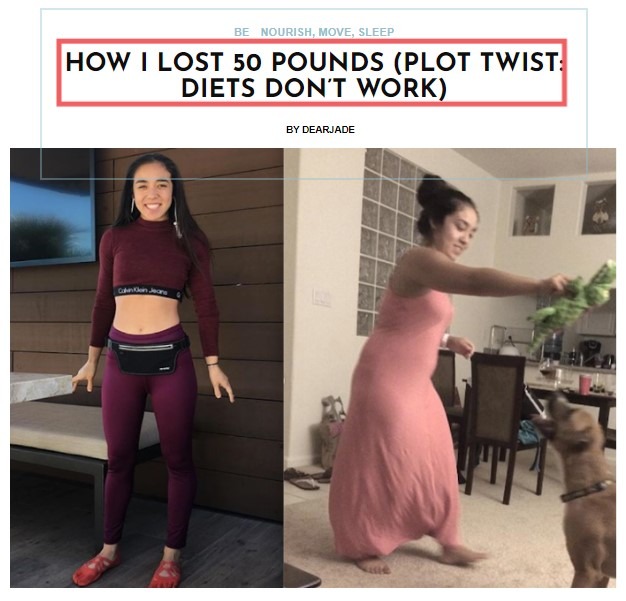
Image via Better and Betterer
14. Make an Audacious Promise in Your Headline
“I’m Going to Teach You How to Make $100,000 in Two Weeks.”
That’s an audacious headline, right? But if I can back it up, I’m going to get clicks.
Making an audacious headline shows that you’re confident in your article or other piece of content, just like this blog headline. It makes a bold and ambitious promise, suggesting that readers can achieve a flat tummy in just one week by following seven simple steps.
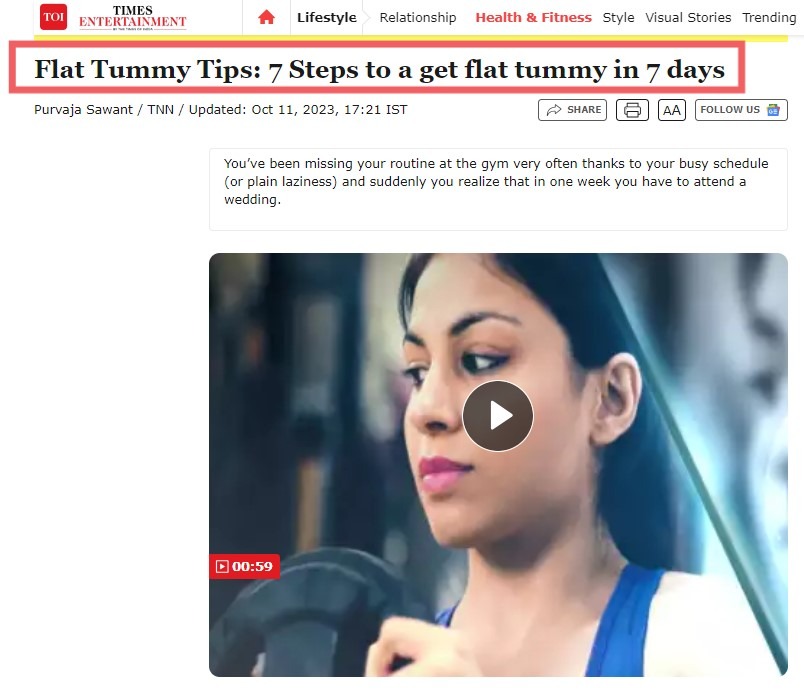
Image via Times of India
Plus, people will be so curious to see if you can follow through that they’ll click.
Pro Tip: Always follow through.
15. Use Active Voice in Your Headlines
Using active voice in headline writing is a simple yet powerful trick to make your headlines stand out. This means the subject of your sentence is doing the action, making your headline clearer and more direct.
So, instead of “Mistakes Were Made by Our Team,” which is passive voice, write “Our Team Made Mistakes.”
See how the second one feels more straightforward and engaging?
Well, active voice gets straight to the point, quickly grabbing the reader’s attention, just like this headline. It speaks directly to the reader, emphasizing what to do.
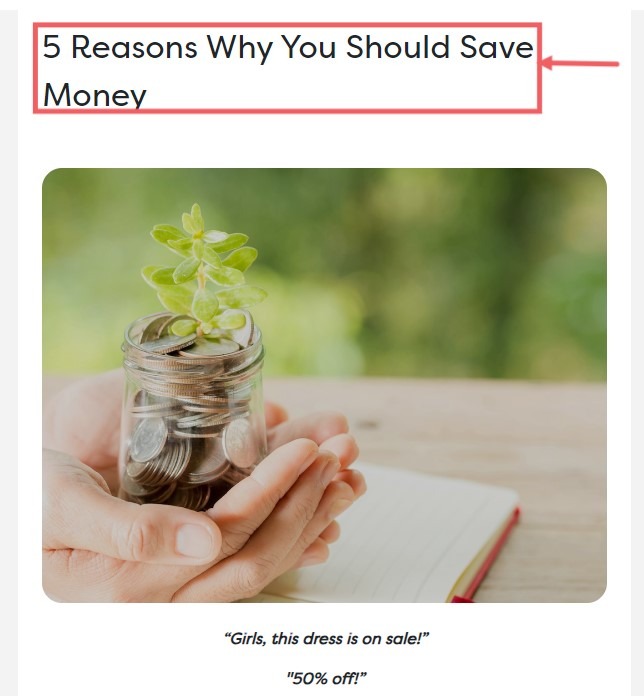
Image via KWSP EPF
Active voice contributes to effective headlines, making them more interesting and attracting more readers and web traffic.
5 Awesome Templates to Help You Write Super Catchy Headlines
We promised to deliver headline writing formulas, so here we are. Following these headline formulas can help you create the best headline that generates clicks, but don’t be afraid to be creative.
If you need to add an extra word or number to a headline, do it. Always make sure you’re serving the copy and the reader.
In the following five sections, we’ll give you the formula and three instances to get your creative juices flowing.
1. Number + Adjective + Noun + Keyword + Promise
- 17 Amazing Steps for Pest Prevention That Will Help You Sleep Better at Night
- 8 Pro Tips on Digital Marketing That Will Save You 20 Hours a Week
- 101 Spectacular Ways to Speed Up Christmas Shopping for a Stress-Free Holiday
2. How to + Action + Keyword + Promise
- How to Run a Marathon Without Getting Dehydrated
- How to Prove You Can Quit Smoking and Appease Your Family
- How to Lose Weight and Feel Healthy Without Depriving Yourself
3. Definition + Guide to + Action + Keyword + Promise
- The Foolproof Guide to Building Legos for Toddlers Without Stress
- Simple Guide to Eating Healthier in Restaurants While Still Having Fun
- Our Complete Guide to Doing Keyword Research in 10 Minutes or Less
4. Negative Word + Action + Keyword
- Quit Smoking by Using Our Essential Oils
- Stop Worrying About Your Kids’ College Funds With a 529 Plan
- Don’t Write Another Article Without Doing Keyword Research
5. Call to Action + Keyword + Promise
- Check Out These Headline Writing Tips to Improve Your Click-Through Rates
- Read These 30 Articles on Pest Control to Keep Your Home Bug-Free
- Check Out These 10 Tips on Dog Nutrition to Raise Healthy Pups
4 Questions to Ask Yourself When Writing a Great Headline
Writing powerful headlines doesn’t end with your first draft. We know, we can hear the collective grown, but hear us out.
A novelist doesn’t write a book and immediately send it to their editor. The author goes through rewrite after rewrite until it’s polished and ready for public consumption.
The same goes for your headline. Often, your first stab at a good one won’t yield the ideal version. You’ll have to tweak words and word order to make sure it’s clickable.
After you’ve written your headline, perhaps using one of the headline writing formulas above, ask yourself these four critical questions.
1. Is My Headline Accurate?
Your headline must promise what’s to come in the copy to follow and it must state your position accurately.
As a simple example, you don’t want to promise “14 Great Tips That Will Skyrocket Your Conversions” if you only list nine tips. Your reader will feel cheated.
The same goes for the result to which you allude in your headline. If you promise your tips will help your readers sleep better at night, you’d better deliver tips that knock out insomnia.
2. How Compelling Is My Promise?
Compelling is in the eye of the beholder, but it’s also very nuanced.
Let’s say you want to share a tip that will cut 10 minutes of work from your readers’ schedules every day. That’s interesting, but it’s not all that compelling.
But what if you tried a multiple?
Instead of promising to save 10 minutes per day, you could promise 70 minutes per week or, even better, 300 minutes per month (or 5 hours per month). That’s more compelling and clickable.
3. How Easy It Is to Understand?
If a reader reads a headline they don’t understand, they won’t click.
There are lots of funny examples on the Internet of newspapers or Internet content that just missed the mark.
Take this one, for example:
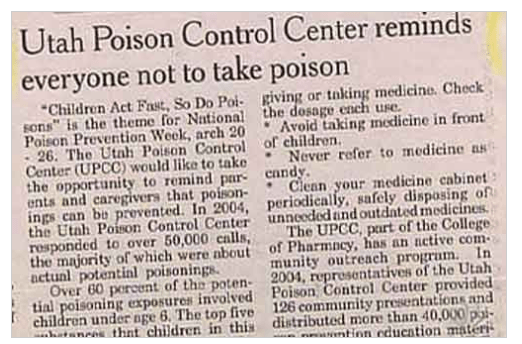
It just doesn’t work. It’s too obvious to be compelling, and it almost sounds as if the author is poking fun at the subject.
Ensure you’re coming across very clearly to your audience. A great way to ensure you don’t trip up is to show or email your headline to someone else. Ask them if the promise is clear. If they don’t get it, rewrite it.
4. Are All Words in My Headline Necessary?
Sometimes, you can cut words from your headlines entirely while still retaining their original intent.
Let’s say, for instance, that you’re writing an article about how to train for a marathon. Your first stab might look like this:
“25 Absolutely Necessary Tips for Running Your First Marathon”
At first glance, it looks okay. But we could remove a word without changing the headline’s meaning at all:
“25 Necessary Tips for Running Your First Marathon”
We could also write it like this:
“25 Essential Tips for Running Your First Marathon”
Learning to pare down your headline writing can make your headlines more compelling. The word “essential” is more powerful than “necessary,” and “absolutely” is an unnecessary modifier for “necessary.”
How’s that for word salad?
Great Headline Writing Real Examples
We see lots of compelling headlines every day. We’ll point out a few that might help make your headline writing more effective.
Let’s look at four examples that show what a good headline looks like:
1. Attrock
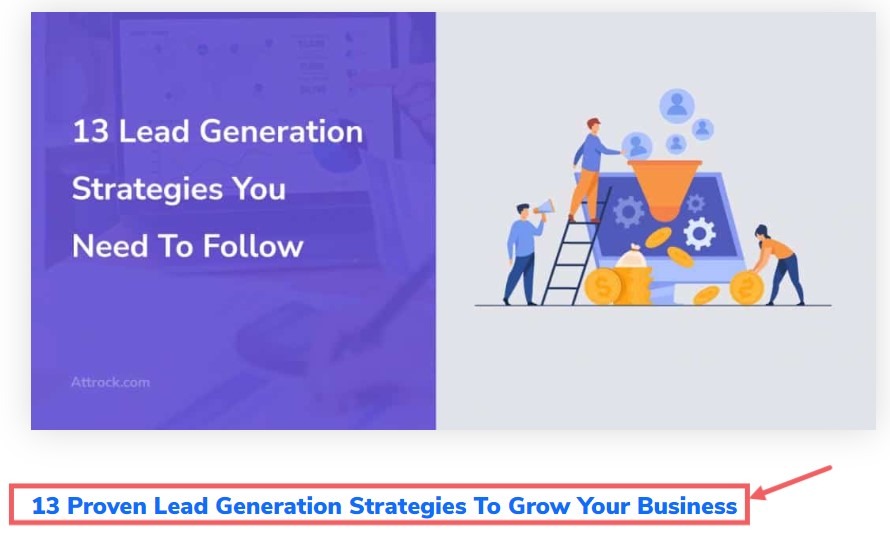
Image via Attrock
This headline works well because it promises useful and tested strategies with the word “proven.” The number “13” catches attention by showing it’s a detailed list.
It also speaks directly to people who want to grow their business, making it easy to understand and act on.
2. Adweek

Image via Adweek
This is a predictive headline that promises a major change in the advertising space. If you can get ahead of the news and shock your readers, you’ll get plenty of clicks.
3. Quick Sprout
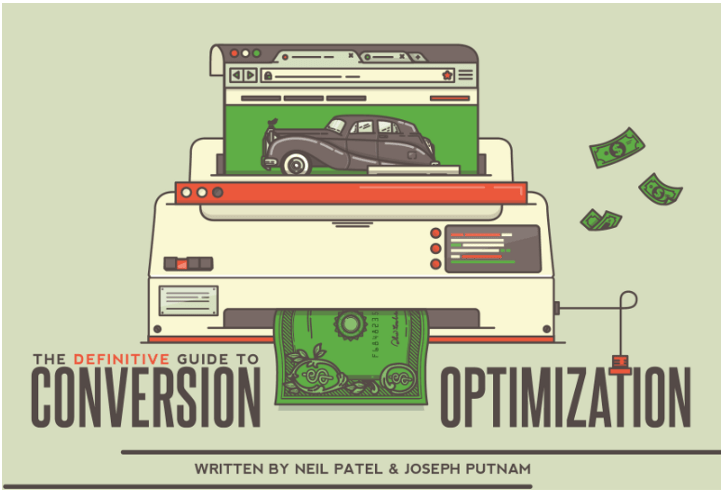
Image via Quick Sprout
It’s “The Definitive Guide to Conversion Optimization.”
The headline doesn’t sound all that captivating at first glance, but its power lies in its simplicity. Neil and Joseph are promising to provide the ultimate guide, which means that readers had better pay attention.
4. Ahrefs
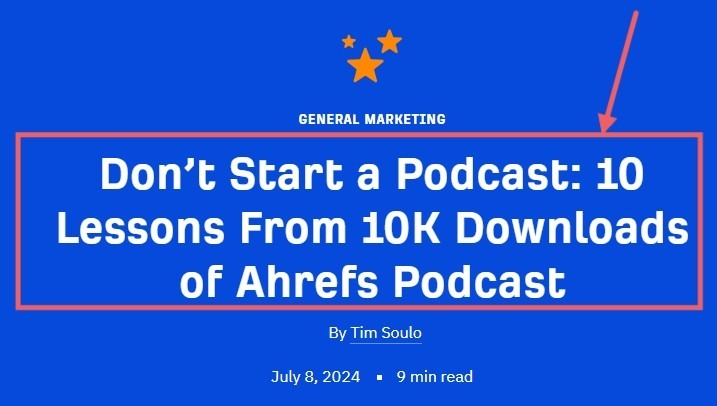
Image via Ahrefs
Last but not least is Ahrefs. The headline “Don’t Start a Podcast: 10 Lessons From 10K Downloads of Ahrefs Podcast” grabs attention by going against what’s popular.
It uses a negative command, which makes readers curious and want to learn more. The mention of “10 Lessons” and “10K Downloads” makes it believable and promises useful information based on real data.
FAQs
Q1. What are examples of an interesting headline?
Headlines are the titles of an article, social media post, blog, news website, book, or ad. Examples are “Top 10 Ways to Save Money” or “Why Dogs Make Great Pets.” They grab the reader’s attention quickly and give them a reason to keep reading.
Q2. How can I write my headline?
When crafting a good headline, keep it short and catchy to make it interesting. Ensure it tells what the article is about. Use strong phrases that make people curious or excited. For example, “How to Ace Your Exams” or “5 Secrets to a Happy Life.”
Q3. What are the three important rules of headline writing?
To write a good headline:
- Be informative: Your headline should reflect what the article is about.
- Be concise: Keep it short and to the point.
- Be compelling: Use interesting phrases that make people want to click and read more.
Q4. What is a powerful headline?
A powerful headline grabs attention and makes people want to read more. It uses exciting, power words and might promise a benefit or solve a problem. For example, “Unlock the Secret to Perfect Grades” is a powerful headline that promises to reveal a secret that can help improve grades, which is something many people want.
Q5. How do I test the effectiveness of my headlines?
Try A/B testing. Create different headlines for the same article and see which one performs better. Use tools like Google Analytics, Optimizely, or CoSchedule Headline Analyzer to see which headlines get more clicks and engagement.
Conclusion
Headline writing sounds easy. It’s not. However, you’ll get better at it the more you practice.
You can use headline writing tips for articles, blog posts, email subject lines, and more. They’re all over the place, so you need to know how to get attention.
Start by following the four Us: unique, ultra-specific, urgent, and useful. Keep your headlines simple, powerful, and data-driven whenever possible.
Start by making a strong statement. You can use an audacious or controversial claim if you want.
Include your targeted keywords and power words, retain an air of mystery, and ensure you know what really matters to your audience.
Finally, make sure you’re A/B testing your headlines. Otherwise, you won’t know what works with your target market.
What’s your favorite headline writing hack?



